Forestry has long been an important industry in Maine, and the state is home to many forestry management companies. However, it can be difficult for a layperson to tell the difference between good forestry management companies and those that do not take proper care of the forests in their care. We feel it’s important to educate our clients on what good forestry practices look like, so they can rest assured that we, or any other forestry company they work with, are performing well.
It’s estimated by Forbes that business opportunities stemming from the sustainable management of forests could reach $230 billion. While this sounds like a major windfall for foresters, these opportunities are spread out among a whole range of forest management professionals, including loggers, timber trucking companies, timber processors, and, of course, landowners or investment firms whose land is being managed. Still, this opens the door for cutting corners to get a larger piece of the pie, and while most forestry professionals are honest and competent, it’s not something that can be taken for granted.
So, how do you know if a particular company is up to the task? After all, most of them make the same promises, mention the same benefits, and use very similar language in their marketing materials. The answer is that there are some key signs and qualities that can help you spot good forest management companies from bad ones.
What Is Forest Management?
Many people think of forests as ancient, untouched ecosystems. However, the truth is that humans have managed forests for centuries. In its most basic form, forestry management is the practice of managing and preserving forests to help ensure their long-term health and productivity. This involves a wide range of activities such as replanting trees, controlling pests, monitoring water quality, and harvesting timber sustainably.
In order to be effective, forest management must be tailored to the specific needs of each forest. For example, a forest in a northern and mountainous region will have different management requirements than one near sea level in the tropics. It is also important for forest managers to consider the landowner’s objectives, the needs of local communities, and other stakeholders, such as wildlife, when deciding how to manage a particular timberland.
What Does Forest Management Involve?
When choosing a forestry management company, it’s important to understand the various elements involved in carrying out successful forestry management practices. Good forest management companies should be able to provide you with a detailed plan of what they intend to do, including:
- Controlling disease and pests
- Enhancing wildlife habitat through conservation methods such as creating corridors between habitats
- Monitoring water quality and controlling runoff
- Harvesting timber sustainably by using best practices such as selective logging rather than clearcutting
- Planning for both harvests and regeneration in ways that benefit the forest in the long term
In addition, good forestry management companies should also have access to resources that allow them to monitor their activities over time. This includes keeping detailed records on tree growth and harvesting, as well as monitoring the health of the forests and wildlife with on-the-ground inspections and potentially technology-assisted analysis such as drone, aerial, or satellite imagery.
Does Forest Management Have Risks?
It’s important to realize that forest management can come with some risks. For example, forestry activities may change nearby ecosystems and wildlife habitats, especially if they are not carried out sustainably. Poorly managed forests may also be more susceptible to damage from severe storms, fires, and other natural disasters.
In addition, some forestry management companies may use practices such as clearcutting or monoculture planting that can have detrimental effects on biodiversity and soil health. Clearcutting has its place, and there are some tree species that thrive in the wake of clearcutting, but this is a selective use case, not a go-to methodology. It is important to research any company you are considering hiring for their forestry management services to ensure they understand how to minimize potential risks and are taking steps to that effect in their projects.
What Is the Difference Between a Forester and a Logger?
It’s also important to recognize the difference between a forester and a logger. A forester is someone who specializes in forest management, while a logger is someone who harvests timber from forests without necessarily considering their long-term health or sustainability. Foresters typically have more experience and are better equipped to manage forest resources sustainably over time, whereas loggers may focus more on short-term profits.
Signs of a Good Forestry Management Company
When looking for a forestry management company, it’s important to ensure you are dealing with a reputable and experienced organization. There are certain criteria that can help you identify good from bad forest management companies:
Certification
A good forestry management company should have certification from an independent third-party certifying body such as the Forest Stewardship Council (FSC). This indicates that they adhere to best practices and standards for sustainable forestry management.
Transparency
A forestry management company should provide detailed information on the forestry practices they employ, as well as what measures they take to ensure sustainable forestry. Good forestry management companies will happily answer questions and explain their methods in detail.
Experience
It’s a good idea to research a forestry management company’s track record before engaging them for services. If they have been in business for several years, this is usually a good sign that they are experienced in forestry management and can be trusted with your needs.
Environmental Stewardship
Good forestry management companies understand the importance of preserving forests for future generations and will be committed to protecting wildlife habitats, conserving natural resources, reducing carbon emissions, and more. These are all important aspects of forestry management, and if a forestry management company is not taking these things into account, then it’s generally best to avoid them.
Proven Track Record
Finally, it’s a good idea to research a forestry management company’s track record and look for any evidence of success in the form of awards or customer testimonials. Companies that consistently deliver quality results are likely to be reliable and trustworthy partners for your forestry management needs.
How Can a Forestry Management Company Ensure Good Practices?
Now let’s look at what forestry management companies should do to ensure sustainable forestry outcomes. A good forestry management company should have:
Knowledgeable Foresters
The company should employ experienced foresters who are knowledgeable in forestry practices and the latest technologies available. They should also be up-to-date on relevant local, state, and federal regulations.
Adequate Resources
A good forestry management company should have the financial resources to employ qualified personnel and purchase necessary equipment for forestry activities. This includes vehicles, tools, safety gear, and other supplies needed for successful forestry operations.
Timber Harvests
Good forestry management companies should only harvest timber in a sustainable manner. The goal is to maintain the health of the forestry and prevent degradation. They should also practice harvesting methods that maintain minimal soil disturbance, protect water resources, and encourage forestry regeneration.
Regeneration Plans
Good forestry management companies will replant or plan the regeneration of harvested areas with native tree species that match client objectives and ensure adequate time for saplings to mature before harvesting again. This helps to sustain forestry yields in a way that maintains forest health over time.
Regular Monitoring
To ensure that the forests are being managed properly, they should be regularly monitored by forestry management companies. This includes conducting surveys of species diversity and populations within the forests, assessing risks to wildlife habitats and other natural resources, and carrying out regular maintenance tasks.
Why Should I Manage My Forest?
Managing your forest is an essential part of responsible land stewardship. Good management practices can help to protect wildlife habitats, increase the quality and value of timber yields, reduce erosion, improve water resources, and more. Sustainable forestry practices are becoming increasingly important for climate change mitigation as forests act as natural carbon sinks that absorb large amounts of carbon from the atmosphere.
By sustainably managing your forest, you can help to preserve this valuable resource for future generations. Additionally, proactively managing your forest can help you increase your land’s value and reduce potential legal liabilities such as fire risks. Ultimately, good forest management companies can help you achieve your forestry goals and ensure that your forests are sustainable for the future.
Methods To Help Landowners Practice Good Forest Management
If you’re a landowner looking to manage your own forest, there are several methods and techniques available to help. These include:
Prescribed Burns
Prescribed burning is a controlled fire that can be used to reduce the risk of wildfire and encourage the natural regeneration of forests. This technique can also improve wildlife habitats by increasing the availability of food sources for species such as deer, birds, and other wildlife. This isn’t something we often use at Tall Pines Forest Management due to the New England ecosystem not being well adapted to regeneration after fires when compared with the Western USA.
Thinning
Thinning involves selectively removing trees from an area in order to thin out dense stands or increase the growth rate of desired tree species. Thinning can also reduce competition for resources between trees and improve the overall health of the forest.
Grazing Management
Grazing management is the practice of managing grazing animals in order to promote healthy vegetation and maintain biodiversity. This can include limiting the number of livestock or allowing them to graze in certain areas for certain seasons. Again, this is not a common tool for us to use at Tall Pines for a range of reasons.
Limited Area Clearcuts
Limited area clear cuts are used to clear the way for new tree species to take over the land area. If our client needs a higher ratio of spruce to pine, for example, we may clear a stand of mostly pine and leave only the spruce standing. This will shift the population of the stand to be largely spruce as it regenerates.
Closing Thoughts
Tall Pines Forest Management is a good example of a company that practices sustainable forestry, provides expert advice on forest management in Maine, and, through profitable management, offers financial assistance to landowners who wish to manage their forests responsibly. By working with experienced professionals like Tall Pines Forest Management, landowners can ensure the health of their forests in a way that benefits future generations. Ultimately, taking a proactive approach to managing your forest is essential for preserving this valuable resource for future generations.


0 Comments